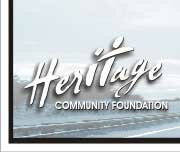
| Home | Search | Sitemap | Help | Contact | Sponsors |
|
|

|

|

|

|
| Home >> Article Database >> Ponoka Shows Off Its Art Moderne Downtown |
|
Ponoka Shows Off Its Art Moderne Downtown Alberta Connections Magazine By Marylu Walters Ventilator grills. Stucco. Curved glass block corners. These are some of the hallmarks of the Art Moderne architectural style that was popular during the post-world war II era, and Ponoka's downtown has them in spades. Ponoka's relatively modern building stock not only reflects the community's post-war prosperity but also forms the core of a recently completed project that promises to bring new prosperity to downtown. Since it joined the Alberta Main Street Programme in May 1995, Ponoka has made improvements to 25 downtown buildings, ranging from "full-blown restorations to relatively modest makeovers," says Fraser Shaw, who served as Ponoka's Main Street project coordinator during that time. They include the Community Rest Room, built in 1929 of cast stone or molded concrete blocks imitating sandstone, and the old Thirsk 5¢ to $1 Store, built in 1949 of cast concrete with oversized louvered vents, glass block door sidelights and recessed stucco bays. The former served as a public washroom and waiting room where farm women and children could socialize while farmers conducted their business in town. It now houses the Ponoka Book Store and the Hair Loft. The Thirsk store is now home to The Ponoka News and the Scotia Trading Company. Total cost of the project was approximately $750,000 including building improvements, Shaw's salary, and office and operating expenses related to all aspects of the project including economic development and marketing. The Alberta Historical Resources Foundation contributed $350,000 through the Main Street Programme. Building and business owners put in $200,000 toward construction, and the Town of Ponoka contributed $180,000. "The project has really transformed the appearance of downtown," Shaw says. "It's really shocking to see all the new pedestrian appeal. It's not only good for attracting businesses, but it will also attract new residents. They'll say Ponoka looks successful. We want to be part of it." Shaw says retail vacancy rates dropped from 20 per cent in 1995 to 10 per cent by 1999. He credits the Main Street project's success to the nine-member volunteer Main Street Advisory Board—comprised of three local merchants, a historical society member, the mayor, the town manager, two councillors and a member at large - which made all the funding and operating decisions within the Main Street Programme's guidelines. Ponoka completed its project ahead of deadline, primarily due to community enthusiasm, says Main Street Programme Chief Merinda Donley. "Ponoka is an amazing community, a very strong community. They are completely gung-ho. The architectural work that happened there over the past three years was amazing." |




